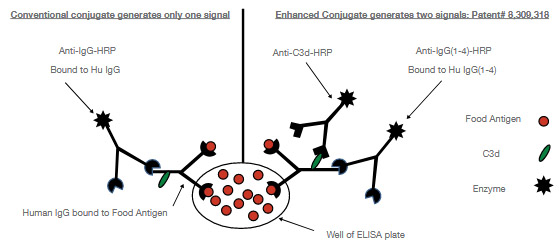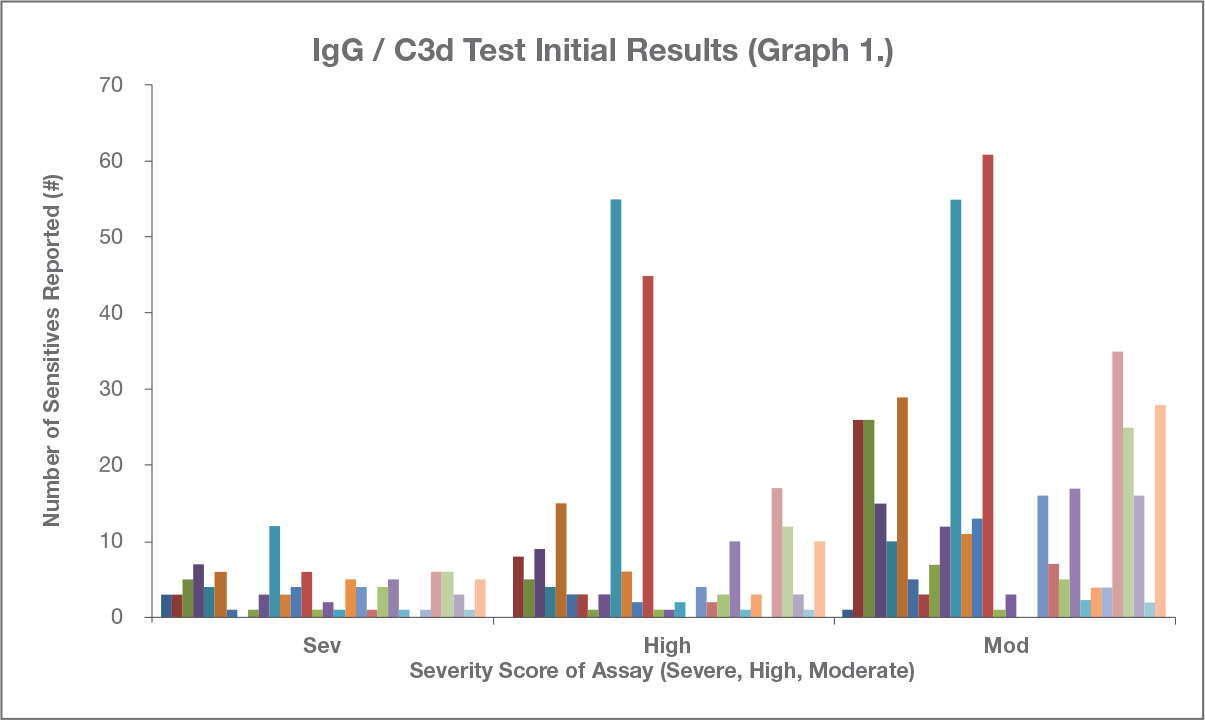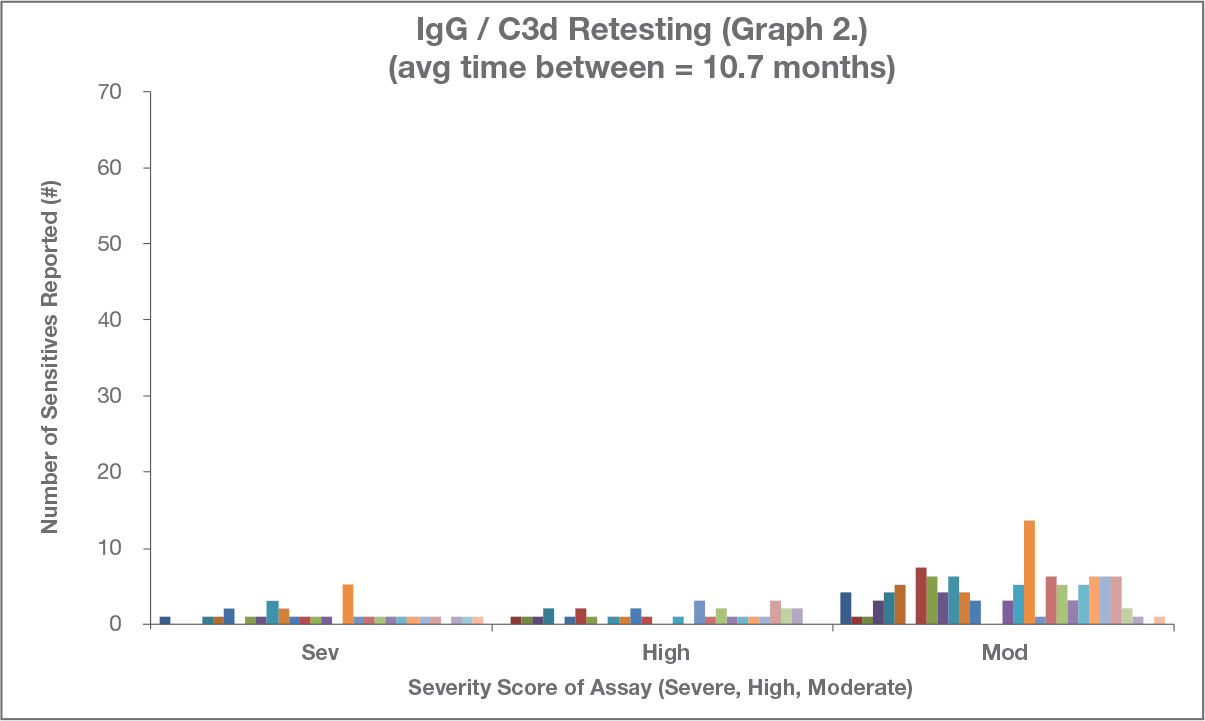Menu
Sample Required: Blood | Test Type: Nutrition, Immunity

Key Advantages
Food Sensitivities and related diseases affect at least 100 million people worldwide and cause a wide variety of illnesses ranging from skin rashes and headaches to chronic intestinal diseases.
Unbalanced or inadequate diets, enzyme deficiencies, stress, genetic predisposition, infections and inflammation, chemicals, drugs, environmental pollutants and toxins are all possible contributing factors in the development of food sensitivities. Research has shown that these factors may weaken both digestion as well as the protective defences in our intestinal tract allowing for allergens to more easily confront our overwhelmed immune system.
Any food antigen entering the bloodstream can produce symptoms associated with food sensitivities. Most food antigens enter the bloodstream through the intestinal epithelium and stimulate the production of IgG antibodies. IgG antibodies bind to food antigens that are free in the blood or that have deposited in tissues and form immune complexes (IC).
These immune complexes activate complement C3 which becomes covalently linked to the IgG forming IC-C3b. Ultimately, the C3b on the IC is cleaved forming IC-C3d. During this process, C3a (anaphylatoxin) is released which causes smooth muscle contraction and has a potent vascular effect. Under normal circumstances, circulating IC-C3b bind to the CR1 receptors on red blood cells and are cleared from the circulation in the liver and spleen. Continued production of antibody and formation of IC may result in deposition of IC in tissues which results in activation of the terminal complement pathway C5-9 on the surface of the tissue causing celllysis and increased inflammation.
An IgG antibody reaction to a food is a delayed reaction (anywhere from several hours to days). Research has indicated that IgG antibodies produced in the blood against particular foods may promote certain inflammatory reactions within the body.
Testing for Complement (C3d) is a direct measurement of inflammation in the body – and is therefore a very important inclusion for any food inflammation test. Activation of Complement alongside high production of IgG antibodies makes it very clear as to what foods will need to be eliminated from your patient’s diet.
Commonly, we see patient results that show high IgG antibodies to many foods. Understanding which of these foods are actually causing your patient inflammation is crucial in avoiding an excessive elimination program, resulting in a more positive patient experience.
The Food Inflammation Test (FIT) by KBMO measures both IgG(1-4) and Complement (C3d) – combining them into one easy-to-understand bar reading.
Measuring both IgG and IC-C3d simultaneously generates twice the signal which improves the sensitivity over other tests which employ a conventional conjugate that measures only IgG.

30 patients who reported a variety of symptoms (such as IBS, acne, sore joints, eczema, & nausea) were screened using the FIT test to determine which foods caused sensitivities (Graph 1).
The foods which tested positive were removed from the diet and the patients were re-tested (Graph 2). The original symptoms were also reviewed to determine if the patient felt better. A significant reduction in food sensitivities was observed and in many cases, the symptoms were also reduced (Graph 2.). This study demonstrates that food elimination based on the FIT Test reduces symptoms and is an effective tool in patient care.


NB: For NZ customers, the FIT box, paperwork and return shipping instructions are slightly different. Please ensure you familiarise yourself with the contents and instructions contained in the kit you receive.
Mon – Fri 8am to 5.30pm NZT
orders@fxmed.co.nz
support@fxmed.co.nz
NZ customers
Free Phone: 0800 439 633
Free Fax: 0800 439 630
Australian customers
Free Phone: 1800 770 904
Free Fax: 1800 665 070

Please note that all products and services found on this website are available to patients through their health practitioner only.
New to FxMed? Set up your account and access leading brands trusted by practitioners in Australia and New Zealand.